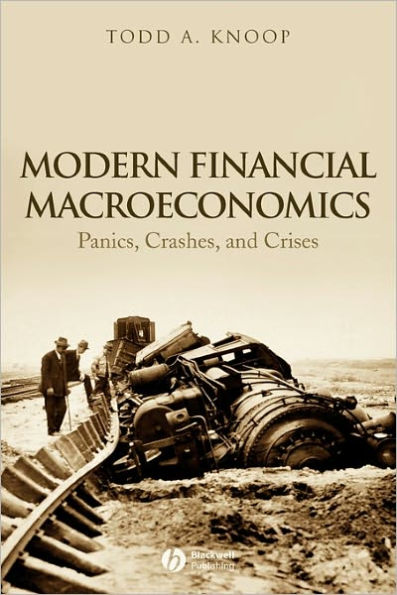Table of Contents
List of Figures ix
List of Tables x
List of Case Studies xi
Preface xiii
Introduction 1
Part I An Introduction to Finance and Macroeconomics 11
1 The Basics of Financial Markets and Financial Institutions 13
Introduction 13
What is Financial Intermediation and Why is It Different from Other Economic Transactions? 14
What is Money? 16
The Importance of Financial Systems in Stimulating Long-Run Growth 17
The Empirical Evidence on Financial Development and Growth 21
The Four Primary Forms of Financial Intermediation 25
Conclusions 33
2 A Brief History of Financial Development 35
Introduction 35
A Brief History of Banking, Financial Markets, and Central Banking 36
Modern Central Banking 40
A Brief History of International Capital Flows 42
Globalization and Financial Development in the 1990s 44
Conclusions 55
Part II Macroeconomic Theory and The Role Of Finance 57
3 Business Cycles and Early Macroeconomic Theories of Finance 59
Introduction 59
Business Cycle Definitions 60
Financial Indicators of Business Cycles 64
The Sunspot Theory 66
Early Monetary Theories 67
The Classical Model 69
The Debt-Deflation Theory 72
Conclusions 74
4 Keynesian, Monetarist, and Neoclassical Theories 75
Introduction 75
Keynes’ General Theory 76
Keynesian Economics and the IS–LM Model 82
The Financial Instability Hypothesis 84
The Monetarist Model 86
Principles of the Monetarist model 86
Neoclassical Theories 91
Conclusions 100
5 New Institutional Theories of Finance: Models of Risk and the Costs of Credit Intermediation 102
Introduction 102
What is Meant by “New Institutional” Theories of Finance? 103
The Financial Accelerator Model and the Role of Credit in Business Cycles 106
The Financial Accelerator and Monetary Policy 111
The Empirical Evidence on the Financial Accelerator Model 112
Conclusions 120
6 New Institutional Theories of Finance: Models of Credit Rationing 123
Introduction 123
Two Models of Credit Rationing 125
Equity Rationing 129
Empirical Evidence on Models of Credit Rationing 131
Conclusions 137
Part III Financial Volatility and Economic [In]Stability 139
7 The Role of Financial Systems in Monetary and Stabilization Policy 141
Introduction 141
Why Does Money Matter? Traditional Theories of the Monetary Transmission Mechanism 142
Balance Sheet Channels and the Monetary Transmission Mechanism 145
Empirical Studies of the Balance Sheet Channels of Monetary Transmission 147
Is Monetary Policy Still Powerful? A Look at the Empirical Evidence 148
Old Debates over the Effectiveness of Stabilization Policy 152
New Debates over the Effectiveness of Stabilization Policy 154
Conclusions 161
8 Banking Crises and Asset Bubbles 163
Introduction 163
The Causes and Prevention of Banking Crises 165
Empirical Evidence on Banking Crises 169
The Causes and Prevention of Asset Bubbles 173
Empirical Evidence on Asset Bubbles 178
Conclusions 188
Part IV International Finance and Financial Crises 191
9 Capital Flight and the Causes of International Financial Crises 193
Introduction 193
The Causes of Capital Flight and Currency Crises 195
Contagion 198
Empirical Evidence on Capital Flows, Currency Crises, and Contagion 200
The Causes and Costs of Twin Crises 202
The Currency and Banking Crises in East Asia 205
Conclusions 213
10 International Financial Crises: Policies and Prevention 215
Introduction 215
The Benefits and Costs of Financial Liberalization 216
Guidelines for Domestic Financial Regulation 219
The Pros and Cons of Capital Controls 222
International Financial Regulation 224
The IMF, Its Policies, and Its Critics 225
Reforming the IMF 233
Conclusions 234
Part V Conclusions 237
11 What We have Learned, What We Still Need to Learn about Financial Macroeconomics 239
A Brief Review 239
What We Have Learned about Financial Macroeconomics 241
What We Do Not Know 247
Concluding Conclusions 254
Bibliography 255
Index 265






